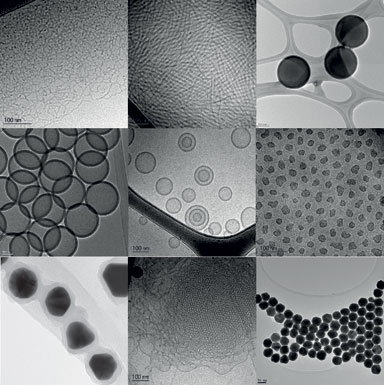Controlled synthesis and structuring of small building blocks that self-organize into highly functional nanomaterials for use in disease diagnostics and therapy is an important aspect in the development of new nanomedicine technology. Nanostructured materials find use in a number of technologies where a prime example is surface coated nanoparticle systems such as polymer micelles, polymersomes, polymer hydrogels and liposomes, in a size range from 20-500 nm. Such materials have proven highly interesting as drug delivery carriers for chemotherapeutics, as transfection systems, in vaccines, and as CT, MR and PET imaging agents for diagnosing and staging cancer.
A major challenge in our use of nanomaterials for use in health technology is that it is difficult to precisely control and characterize the structure of these materials after synthesis. It is important to synthesize materials that are highly uniform, that has the desired size and surface chemistry and with sufficient stability in a biological environment. The characterization is challenging, in particular the materials interaction with biological components and the studies of material integrity in a complex biological environment. In the Center for Nanomedicine and Theranostics it is a highly important aspect of our efforts to be leading in the synthetic chemistry and characterization of nanomaterials, including nanomaterial interactions with biology, as this is a fundamental for development of the new technologies of the future.
